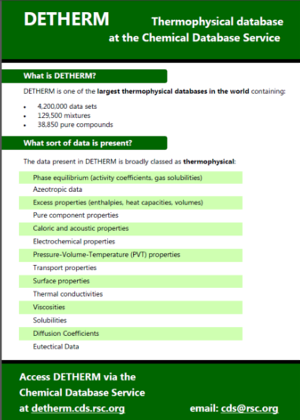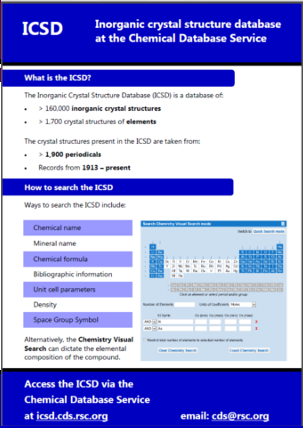The newest version of the Cambridge Structural Database (CSD), Version 5.35 is now available via WebCSD, X-Windows and the Remote Desktop Connection. Register here.
The CSD 2014 release contains 658,007 entries, an increase of 43,675 on the 2013 release. For more information, see the release notes.
Updates to the software to query and analysis CSD data are now available via X-Windows and the Remote Desktop:
Mercury 3.3
- Data Analysis usability enhancements
- 3D view enhancements
- Packing Feature and Molecule Overlay bug-fixes
- Copy from Mercury’s More Info 2D Diagram to many packages (including Microsoft Office)
- Hydrogen Bond Propensity Tool enhancements
Mercury 3.3.1
- 62 more entries are now available in the teaching subset.
- Can now measure the distance to a plane.
- Improvements to the usability of the Data Analysis Tool’s interface when handling descriptors.
- Hits are now automatically loaded into the Data Analysis Tool when clicking on Spreadsheet after a packing feature search has been run.
- After changing the Picking Mode, the Edit Structure dialog can now be used.
- Issues with wrongly oriented labels when outputting with POV-Ray, and displaying Angle and Torsion tabs in the More Info dialog have been corrected.
ConQuest 1.16
- Searches can now be restricted to noncentrosymmetric or centrosymmetric space groups
DASH 3.3.2
- DASH is now available via the CSD Remote Desktop
- DASH is a package for solving crystal structures from powder diffraction data. More information can be found here.
Mogul 1.6.1
- The speed of searches has been improved.
The newest versions of IsoStar and Mogul have also been installed.
Comments Off on Cambridge Structural Database – Software and Data Updates












